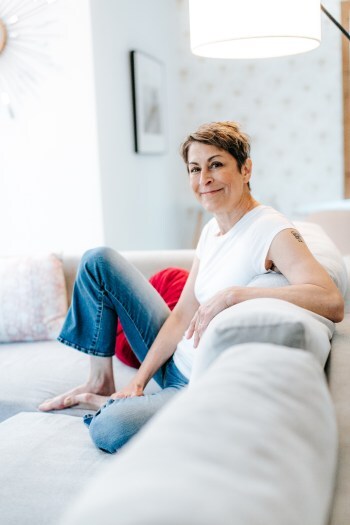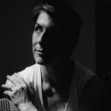Susan Piver's Blog, page 13
November 19, 2023
The Path to End Suffering: Step Five
Hello, wonderful Open Heart Project. I hope you are well and enjoying this series of videos on foundational Buddhist teachings. So far, we have covered:
Right View
Right Intention
Right Speech
Right Action
Today we move on to the fifth step: Right Livelihood. How can we turn work, money, and the effort to express ourselves into a part of the spiritual journey? Please have a listen! Many thoughts were expressed in this video! What do you think? I’d love to hear.
Much love, Susan
The post The Path to End Suffering: Step Five appeared first on The Open Heart Project.
November 12, 2023
The Path to End Suffering: Step Four
Hello, wonderful Open Heart Project. I hope you are well and enjoying this series of videos on
the noble eightfold path. Today we continue our conversation with step number four: Right Action
To view previous talks:
Right View
Right Intention
Right Speech
Please have a listen to this short talk to learn more about what actions we can take (and which to avoid) to bring more goodness into the world. Which needs it! You can do it!
Thoughts or questions? Love to hear them.
Much love, Susan
The post The Path to End Suffering: Step Four appeared first on The Open Heart Project.
November 5, 2023
The Path to End Suffering: Step Three
Hello, wonderful Open Heart Project. I hope you are well and enjoying this series of videos on foundational Buddhist teachings. Right View is here and Right Intention is here in case you want to review.
Today’s talk is about the third step on the noble eightfold path: Right Speech. Spoiler alert: this one can save the world. I’m not even kidding. In this talk, I offer some thoughts on the four things that comprise wrong speech and the six things we can do instead. I’m not going to lie: these are not easy. At first. But because they all depend on introducing a tiny gap between what you think and what you say, with the support of a consistent meditation practice, it gets easier and easier.
Thoughts? Love to hear them.
Much love, Susan
The post The Path to End Suffering: Step Three appeared first on The Open Heart Project.
October 29, 2023
The Path to End Suffering: Step Two
Hello, wonderful Open Heart Project. I hope you are well and enjoying this series of videos on foundational Buddhist teachings. Today’s talk is about the second step on the noble eightfold path: Right Intention.
Next video: Right Speech (my personal favorite)
Thoughts? Love to hear them.
Much love, Susan
The post The Path to End Suffering: Step Two appeared first on The Open Heart Project.
October 22, 2023
The Path to End Suffering: Step One
Hello, wonderful Open Heart Project. I hope you are well and enjoying this series of videos on foundational Buddhist teachings. The idea here is not to make you (or anyone) into “Buddhists” but to draw from this extraordinary wisdom what can be applied to your life.
In the last few weeks, we talked about:
Life is suffering. (uh-oh)The cause of suffering (grasping)The cessation of suffering (it’s possible!)This week, we move on to the fourth noble truth which is The Noble Eightfold Path. It describes the eight steps we can take to realize what it means to stop suffering. Then we can help others to stop suffering in a more direct way.
The eight steps along the path are:
Right ViewRight IntentionRight SpeechRight ActionRight LivelihoodRight EffortRight MIndfulnessRight ConcentrationIn this video I offer a brief overview of the eightfold path (and how it is organized according to three categories: ethical conduct, living a mindful life, and true wisdom). (Many numbers!) And then go on to discuss what is meant by Right View.
Next video: Right Intention!
Thoughts? Love to hear them.
Much love, Susan
The post The Path to End Suffering: Step One appeared first on The Open Heart Project.
October 15, 2023
What does Buddhism say about how to stop suffering?
Hello, wonderful Open Heart Project. I hope you are well and finding joy in your world.
In the last few weeks, we began a discussion of the Four Noble Truths, the foundational teachings in all of Buddhism.
Life is suffering. (uh-oh)The cause of suffering (grasping)The cessation of suffering (it’s possible!)The Noble 8-Fold Path (steps you can take to alleviate suffering)This week, we move on to truth number three, how to stop suffering. I hope you find this useful, interesting, helpful, especially at this terrible time of war and strife.
Thoughts? Love to hear them.
Much love, Susan
The post What does Buddhism say about how to stop suffering? appeared first on The Open Heart Project.
October 8, 2023
Why are we all so afraid? What calms fear?
Hello, wonderful Open Heart Project. I hope you are well and finding joy in your world.
Last week, I launched a series of weekly emails about the foundational Buddhist teachings on the Four Noble Truths. They are:
Life is suffering. (uh-oh)The cause of suffering (grasping)The cessation of suffering (it’s possible!)The Noble 8-Fold Path (steps you can take to alleviate suffering)We began a week ago with Truth #1 and now we move on to #2 which explains where suffering comes from.
I hope this brings benefit to you and your world! Do let me know.
Thoughts? Love to hear them.
Much love, Susan
The post Why are we all so afraid? What calms fear? appeared first on The Open Heart Project.
October 1, 2023
Where to start in trying to live a mindful, spiritual, joyful life?
Hello, wonderful Open Heart Project. It is great that we can practice together.
I so appreciate your responses to our recent questionnaire about these videos and what might make them more useful to you. Very grateful to all who took the time to respond to these five questions. Please click here to add your voice!
One thing I got from reading your responses to the question “what would you like to hear more about” is that you’d like to know more about Buddhism. This is not the same thing as wanting to become a Buddhist or walk the Buddhist path or anything like that. But you have this sense that there is wisdom in there that is different from what you have been taught elsewhere. There are things you can apply to your life right now without adopting a new belief system. There are things to learn! That is true! So, this week, I’m launching a series of weekly emails about the foundational Buddhist teachings on the Four Noble Truths. They are:
Life is suffering. (uh-oh)The cause of suffering (grasping)The cessation of suffering (it’s possible!)The Noble 8-Fold Path (steps you can take to alleviate suffering)This week we begin with truth #1 and why it matters so much. Don’t take my word for this. Or anything! Have a listen for yourself and see what you think.
Upcoming weeks will go into the other truths and then take a closer look at each of the steps along the 8-fold path. I hope this brings benefit to you and your world! Do let me know.
Thoughts? Love to hear them.
Much love, Susan
The post Where to start in trying to live a mindful, spiritual, joyful life? appeared first on The Open Heart Project.
September 24, 2023
How to infuse your day with courage

Sometimes I wake up in the morning and the first thing I do is freeze in the face of the world’s ills. Then I think about what’s on my to-do list and wonder if I can actually do any of the things I hope to. Am I capable or just a capable poser? Will there be something in my email or voicemail that will scare me? (I scare easily.) I wonder if I’ll be good enough to meet the circumstances of my life.
I’m not even on cup of tea #2 before I’ve talked myself under the desk, afraid to come out.
Then I remember the one question that, when I ask it of myself, snaps everything back into focus. This question calms me down, returns to me my enthusiasm for my own life, and empowers me to own my aspirations.
What kind of good can I do in the world today?
That’s it. Not what kind of good can I do FOR the world or TO the world—but in it. How can I jump in to the craziness and joy and despair and mystery and possibility and try to meet what comes at me with authenticity, gentleness, and/or ferocity? What do I need to do so that I can go to sleep at the end of this day knowing that I did something, anything to leave the world in the tiniest bit better shape (or greater) than when I woke up? Even if I’m the only one who knows it?
It could be something as simple as sweep my front stoop to create more beauty in the neighborhood…call a sick friend…take a walk so i can remain healthy for myself and those who love me…or something as grand as start that book proposal that shares my knowledge with the world…write a giant check to charity… or, best of all, try to meet every being I encounter in the next 24 hours with openness, patience, curiosity, and delight? (Those last two, curiosity and delight, are synonyms…so don’t worry about having to like everyone or always be nice. You can be grumpy and judgmental. Just take an interest in the whole thing and don’t believe any of it.) This openness creates goodness within you, around you, and for you.
When you contextualize your activities as efforts to increase the good, something magical happens. It doesn’t change what is on your to-do list, but shifts the intention behind it all. In this shift is tremendous energy.
Check it out and see if it does the same for you. Try asking yourself the question, “what kind of good can I do in the world today?” every morning for a week or so.
Seriously. If you open your heart, you can change the world. I’m not joking about that. You can do it! You! Yes, you!! (And that is why this whole thing is called The Open Heart Project.)
Let me know what you come up with.
With love,
Susan
The post How to infuse your day with courage appeared first on The Open Heart Project.
September 17, 2023
Think you should aspire to non-attachment? Think again.
Hello, wonderful Open Heart Project. I hope you and yours are well and safe.
I so appreciate your responses to our recent questionnaire about these videos and what might make them more useful to you. Very grateful to all who took the time to respond to these five questions. Please click here to add your voice!
Before this week’s meditation I offer some thoughts on ego, no-self, and attachment, teachings famously associated with Buddhism. I thought it was important to do so because I’ve seen in so many of us the mistaken notion that, in order to be a truly spiritual (aka good) person, we have to “get rid of the ego” or “become less attached.” My friends. That is hokum.
Please have a listen to this video to hear more about how ego and egolessness are inseparable and a more accurate (in my opinion) definition of non-attachment. (Spoiler: your entire self is invited to the party. No self, no journey. Bring it all: your brilliance, confusion, rage, and joy.)
Thoughts? Love to hear them.
Much love, Susan
The post Think you should aspire to non-attachment? Think again. appeared first on The Open Heart Project.



